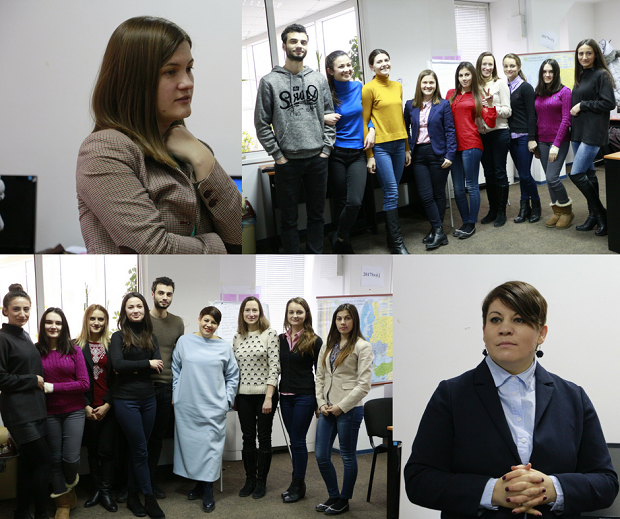Online Journalism: Multimedia Tools to “Catch” the Reader

The era of digital information is developing at a fast pace. What was important yesterday is no longer of interest today, and the media consumer is becoming increasingly demanding. Information technologies don’t stand still, either. Every other day new tools appear, giving to journalists the opportunity to convey messages in an interesting, exciting and attractive way to the public. How to write correctly for online media and how to attract views? These questions were answered by the trainers of the course on online journalism, Liliana Barbarosie and Tatiana Etco, journalists from Radio Free Europe.
Online journalism is the first course of the second semester at the SAJ. Divided into two modules, it is intended to offer to students the skills needed to practice online journalism. The course is a continuation of other programs in which the students learned elements of online journalism, such as Photojournalism, Visual Journalism, News, Report, etc.
The first module was focused specifically on the content of online journalistic texts. Guided by Liliana Barbarosie, students found out about the peculiarities, advantages and disadvantages of online journalism. Here, students also learned the structure of an electronic text and how to write correctly for various online platforms. And since one of the key elements online is the headline, the trainer drew their attention to the fact that it should act as a “hook” in order to interest the reader and make him access and read the story. “The headline is your story in one sentence,” Liliana Barbarosie said. Within this module, students made three works: an essay on the topic of “Advantages and Disadvantages of Online Journalism”, a photo gallery on the topic of “Man and Profession”, and an article about media owners in Moldova.
The second module was dedicated to technical aspects of online journalism. For four days, young people explored multimedia tools and found out what hyperlink, ThingLink and slideshow are and how they work. By means of online programs, the students of the School of Advanced Journalism made a visual presentation in Timeline, Story Map and Storify.
Young journalists were impressed by what they learned at the course, and they say they will use various tools in the articles they will make in the future. “I understood that in the internet a journalistic material can become a real work of art. Now we know how to attract readers,” said student Adriana Vlas.
Tomorrow, the SAJ starts the course of Media Management.
